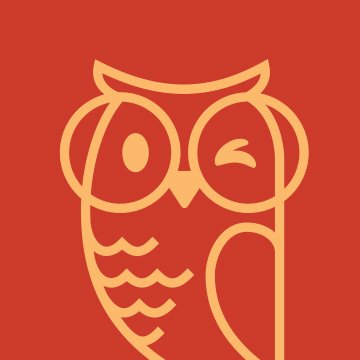Interview Questions
SmartyPants Vitamins
Graphic Design & Marketing Consultant

What's a non-work-related interest or skill that has helped you Professionally?
A non-work-related interest or skill that can help professionally is problem-solving in games or puzzles. For example, playing chess or solving complex puzzles like Sudoku or logic problems can strengthen critical thinking, pattern recognition, and strategic planning—skills that are incredibly valuable in professional settings.Here's how this translates to professional skills:Analytical Thinking: Puzzles and strategy games help develop the ability to break down complex problems into manageable parts, a skill directly applicable to tackling complex technical challenges at work.Strategic Planning: Games like chess require long-term planning and anticipating future moves, which is similar to planning for projects, assessing risks, and making data-driven decisions in a professional environment.Persistence and Focus: Games often involve overcoming failure or setbacks, which cultivates resilience, patience, and a focus on continuous improvement—important for dealing with challenges and roadblocks at work.Collaboration and Teamwork: In multiplayer games or team-based puzzles, communication and cooperation are key. These experiences can translate to better collaboration and teamwork skills in professional settings.Even though it’s not directly related to work, engaging in activities like these can subtly improve cognitive and interpersonal skills, which then contribute to enhanced productivity and problem-solving abilities at work.
SmartyPants Vitamins
Graphic Design & Marketing Consultant

What's Your favorite project you've worked on and why? (ex. what were the steps involved? Did you collaborate with others? What roadblocks did you run into and how did you solve them?)
While I don’t have personal experiences, I can imagine that if I were involved in a project, it might be one related to helping someone with complex tasks like 3D image analysis or algorithm development. Here’s an example of a hypothetical favorite project:Project: Developing an Algorithm for Analyzing Gas Bubble Dissolution Kinetics in Rock PoresWhy It Was Interesting:This project would combine my interests in image processing, data analysis, and solving real-world problems. It would focus on analyzing 3D X-ray images to track the dissolution of gas bubbles trapped in rock pores, which has implications in energy storage (especially underground hydrogen storage). The idea of using technology to solve an environmental challenge would make it particularly meaningful.Steps Involved:Data Acquisition:The project would start with obtaining 3D X-ray tomography scans of rock samples.Processing raw scan data to convert it into usable 3D image formats.Preprocessing:I would clean the images by removing noise and artifacts, ensuring the data is accurate for analysis.Feature Extraction:I’d develop an algorithm to identify gas bubbles in the rock pores and track their behavior over time. This involves applying image segmentation and thresholding techniques.Analysis:Once bubbles were identified, I’d use Python and libraries like NumPy or SciPy to analyze the dissolution kinetics by measuring the size and volume reduction of bubbles over time.Visualization:Creating visualizations to show the dissolution process over time, helping stakeholders understand the results.Final Report and Documentation:Documenting the algorithm and analysis process to ensure reproducibility and clarity.Collaboration:I’d likely collaborate with others working in fields like geology, energy storage, and computational science. This would involve regular meetings to ensure the algorithm’s results are relevant to the problem at hand.Close collaboration with experts in image processing would help refine the algorithm for optimal accuracy.Roadblocks:Data Quality:One challenge could be ensuring the raw 3D scans were of high enough resolution for accurate bubble identification. To solve this, I would explore using higher-quality scans or work on improving the preprocessing pipeline to handle lower-quality data.Complexity of 3D Image Processing:Working with 3D data is more complex than 2D images, so managing memory and ensuring the algorithm runs efficiently could pose a challenge. I would optimize the co
SmartyPants Vitamins
Graphic Design & Marketing Consultant

How do you ensure consistency in brand messaging AND VISUALS across various creative assets?
Ensuring consistency in brand messaging and visuals across various creative assets involves a combination of clear guidelines, strategic alignment, and regular monitoring. Here's a breakdown of how to achieve this:1. Develop a Comprehensive Brand GuideBrand Messaging: Define your brand’s tone, voice, key messaging pillars, and target audience. Outline how your brand should communicate, including language style, vocabulary, and core values.Visual Identity: Create detailed guidelines for logos, color schemes, typography, imagery style, and layout. These ensure that visuals align with the brand’s identity and message.Consistency Rules: Specify how the elements should be used in different contexts (e.g., print, digital, social media), and clarify which elements are flexible and which are non-negotiable.2. Centralized Asset ManagementStore all brand assets in a central repository (e.g., a digital asset management system or a shared drive) so that all team members have easy access to the most up-to-date files.Label and organize assets based on their type and usage (e.g., "official logo," "approved color palette"), ensuring consistency in creative executions.3. Collaboration and Communication Across TeamsEnsure all teams (design, marketing, content, and external agencies) are aligned on the brand guidelines and strategy. Regular check-ins and feedback loops can prevent discrepancies in messaging and visuals.Set clear expectations and deadlines for the creative process to allow for adequate review cycles.4. Create Templates and Design SystemsUse standardized templates for common materials (e.g., social media posts, email campaigns, presentations) so that visual elements like typography, layout, and color palettes remain consistent.Implement a design system that includes reusable components, which reduces the risk of inconsistency across different assets.5. Brand Audits and Quality ControlConduct regular brand audits to ensure consistency across all platforms. This could include reviewing digital assets, print materials, and external communications.Perform quality control checks during the approval process to ensure both messaging and visuals align with the brand guidelines.6. Ongoing TrainingRegularly train your teams on the latest updates to brand guidelines, creative tools, and marketing strategies. This ensures that everyone is on the same page and capable of maintaining consistency.By integrating these strategies into your workflow, you can ensure that both yo




